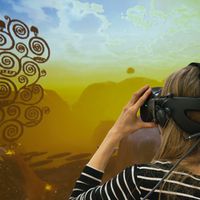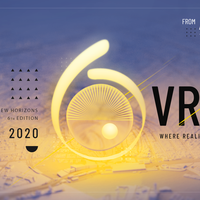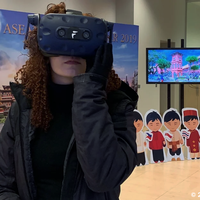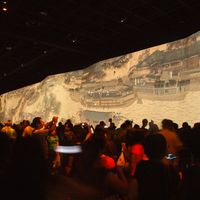#art&technology: Visiting Popular Exhibitions and Museums
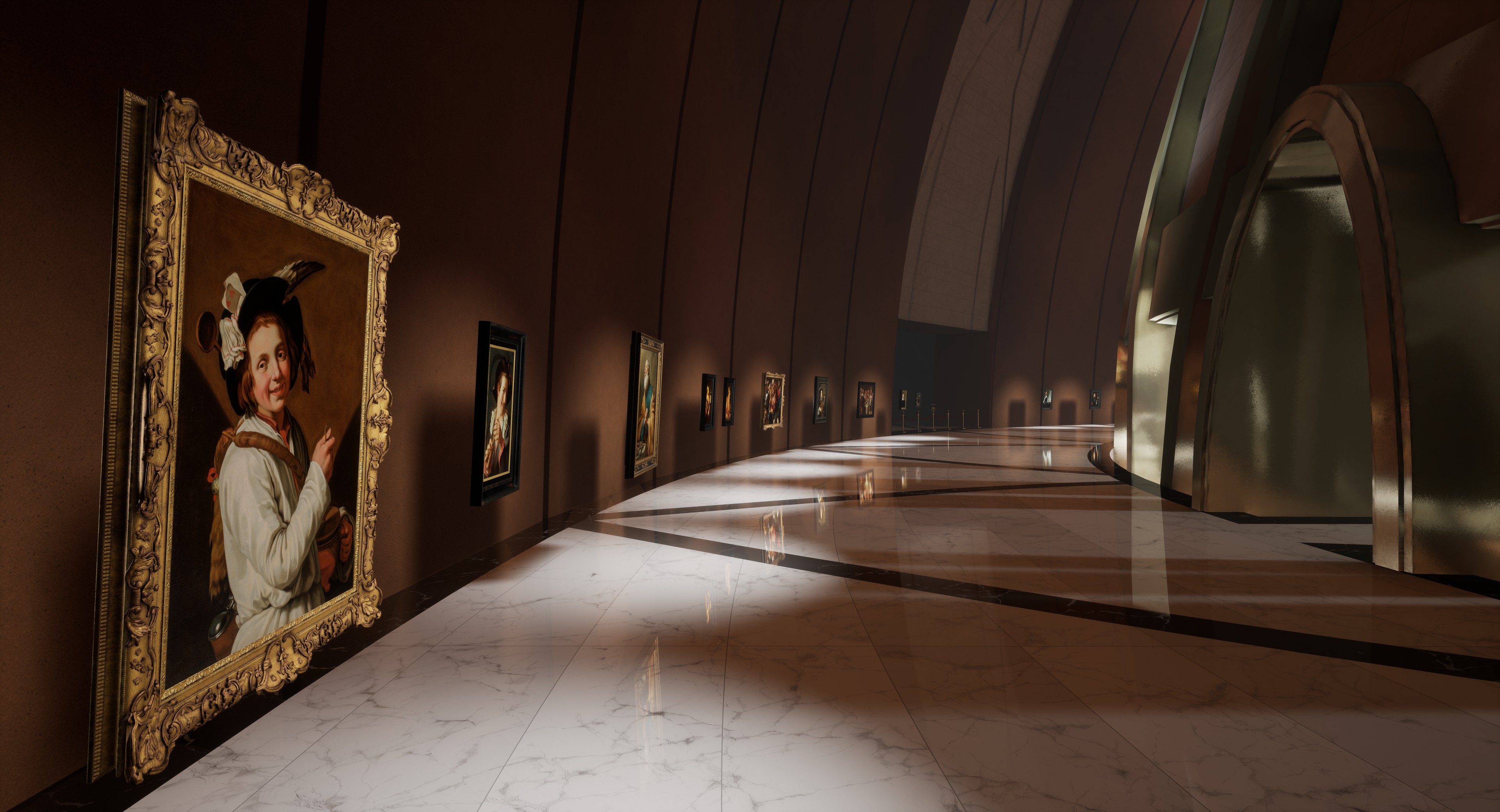
In culture360.ASEF.org’s series of articles on #art&technology, Angela Youngman highlights the sustainabilitya nd overtourism problem linked to museums and how museums are experimenting with virtual reality to alleviate this problem.
Anyone visiting famous museums, art galleries and exhibitions quickly became aware of the problems of over tourism. Crowds gather around the most famous, well-known masterpieces, making it hard to see and appreciate their full beauty. Keen artists and historians wanting to study details can find it almost impossible to do so. At the Louvre, Paris, you can find yourself waiting in a long queue to glimpse Leonardo Da Vinci’s Mona Lisa for just a couple of seconds before having to move on, due to the sheer press of people waiting in line.
Museums are all too aware of the problems yet dealing with it is another matter. No one wants to restrict access or prevent people from seeing these wonderful works of art. Issues of safety and security however have to be borne in mind. As tourist numbers increase – and all the indications are that tourist numbers will continue growing for the foreseeable future – how can organisations then cope whilst still providing an enjoyable experience for all visitors?
Allied to this is the need to ensure that art masterpieces belong to the world. These are globally renowned paintings and artifacts that form part of an international heritage. The same is true of famous monuments and locations. Access is not just for those who can afford to travel to see these places and masterpieces in situ, but for anyone who wants to discover more about art, history and heritage. Balancing all these conflicting demands is a difficult task.
Technology has already provided a way in which companies like the Royal Opera House and the Bolshoi Ballet can share performances in real time with audiences around the world. Museums and galleries are now hence turning to technology for innovative solutions.
The Kremer Museum has led the way. Founder George Kremer says “our journey as collectors has always been about finding the highest quality artworks and simultaneously finding ways to share them with as many people as possible. We believe we can make a greater contribution to the art world by investing in technology rather than in bricks and mortar for our collection.”
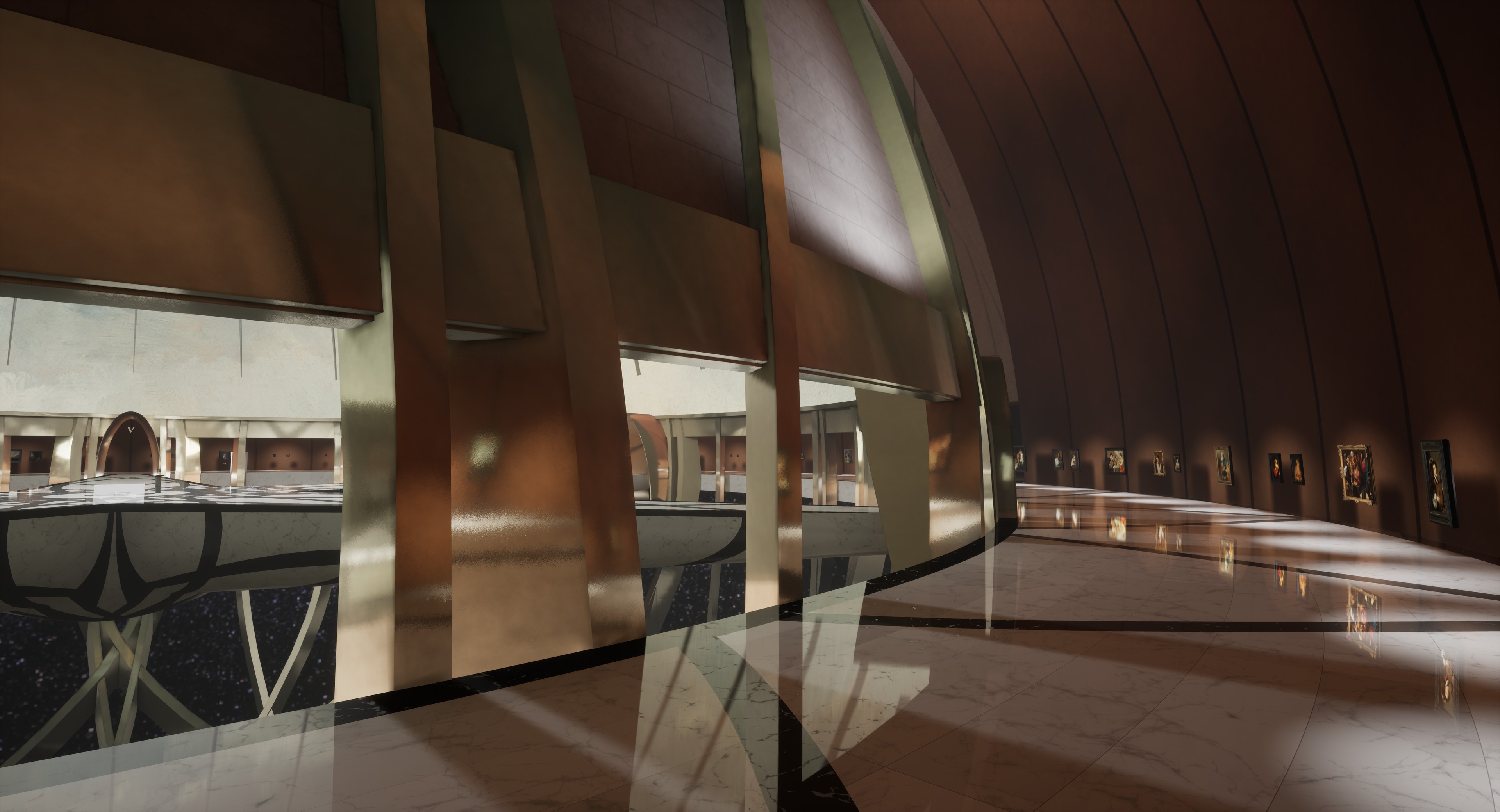
Exploring the digital world of the Kremer Museum
Designed by architect Johan van Lierop of Studio Libeskind, the Kremer Museum combines cutting edge technology with world class art. The 74 Dutch and Flemish masterpieces can only be seen through virtual reality (VR) technology. The systems enable anyone with access to a computer to see the masterpieces in a museum setting, no matter where they are in the world.
Each painting was photographed up to 3,500 times using a photogrammetry technique, allowing the creation of an ultra-high-resolution visual model. The result is an immersive, on-screen visitor experience allowing people to closely examine the surface and colours of the art works. Uniquely, visitors are also able to explore the reverse of the paintings and discover the stamps of provenance.
“The final product pushes all boundaries – the resolution of the visuals is of a higher quality than the human eye can process, the museum is ready to scale to the improvements in future hardware and the experience will only get better.”
Museum Director Joël Kremer adds, “The response to this initiative has been overwhelmingly positive. There are some challenges with hardware, but it will catch up fast. Our main goal now is to reach to as many people as we can using digital technology. So, we are very close to launching a mobile phone and tablet app, which uses AR (augmented reality) to show the museum.”
He continues, “I see this developing more in the future through digital outlets and partnerships with organisations who want to show their students and visitors something new and special in any corner of the world. The great thing about this experience is the scalability; traditional museums are often stuck in physical spaces. None of them can double in size offline …. Digitally they could.”
Over at the Mauritshuis Museum in the Netherlands, a venture with National-Nederlanden, has enabled technology to extend the visitor experience by creating an augmented reality experience relating to a Rembrandt painting. This is the first time any museum has attempted such a task. It focuses on the painting, The Anatomy Lesson of Dr Nicolaes Tulp’ which is displayed within the Rembrandt & Golden Age exhibition.
Visitors anywhere in the world can digitally experience the anatomical theatre, closely observing the work of Dr Tulp and his fellow physicians, as well as the corpse of Aris Kindt under examination. No special equipment is required, just the need to download the free Rembrandt Reality App.
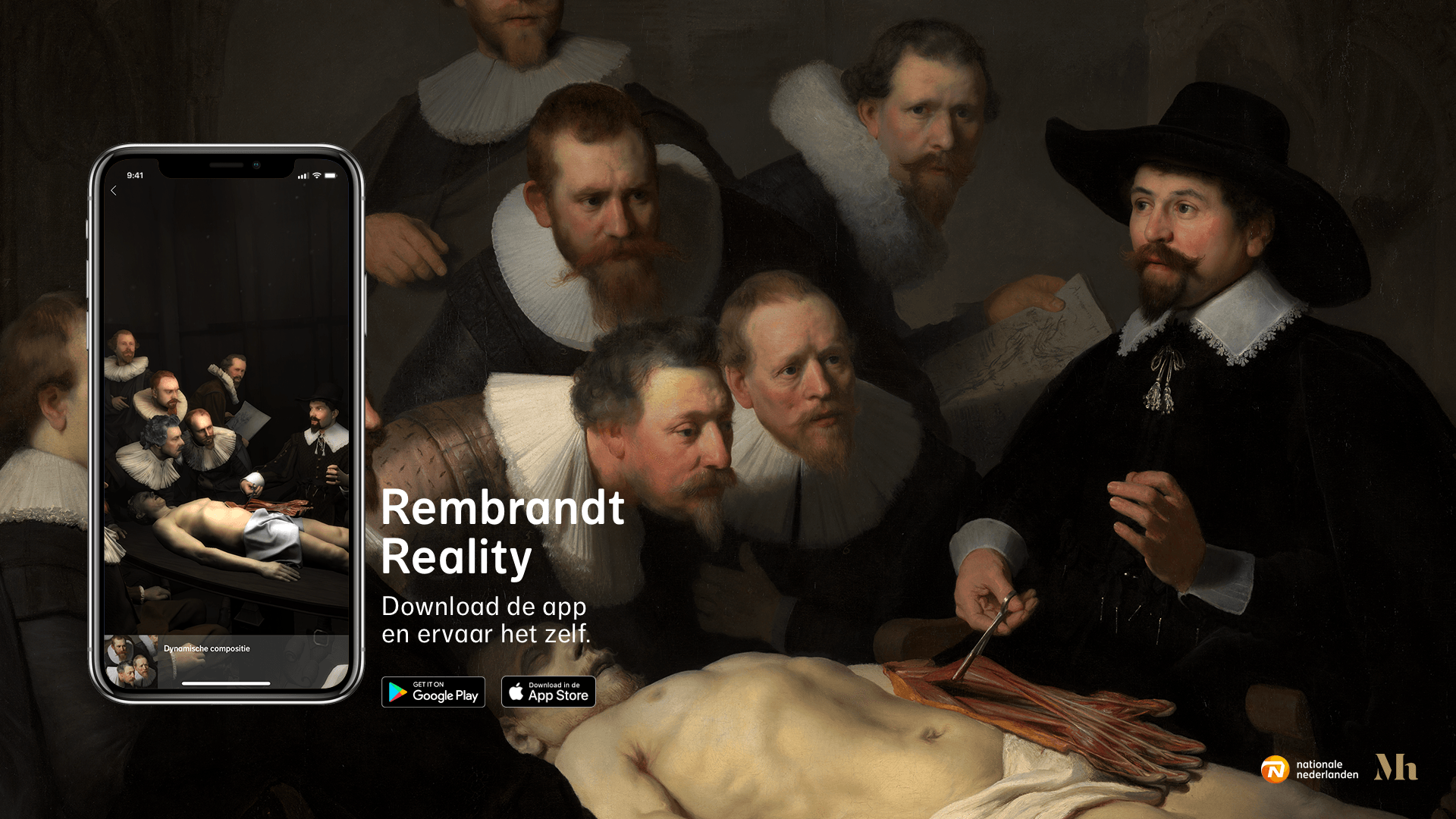
Downloading the Rembrandt Reality App. Mauritshuis Museum
Virtual holocraphic projections using the camera on an Apple or Android device allows virtual objects to be projected into a physical world where the user can interact with them. A virtual ‘portal’ allows users to step inside with a smart phone and experience the anatomy lesson.
Emile Gordenker, director of the Mauritshuis, says, “This is a new way of looking at art, which catapults the experience of looking at art into the future. Using augmented reality technology, you can enter the anatomical theatre through a portal, whether you are at home or outside.”
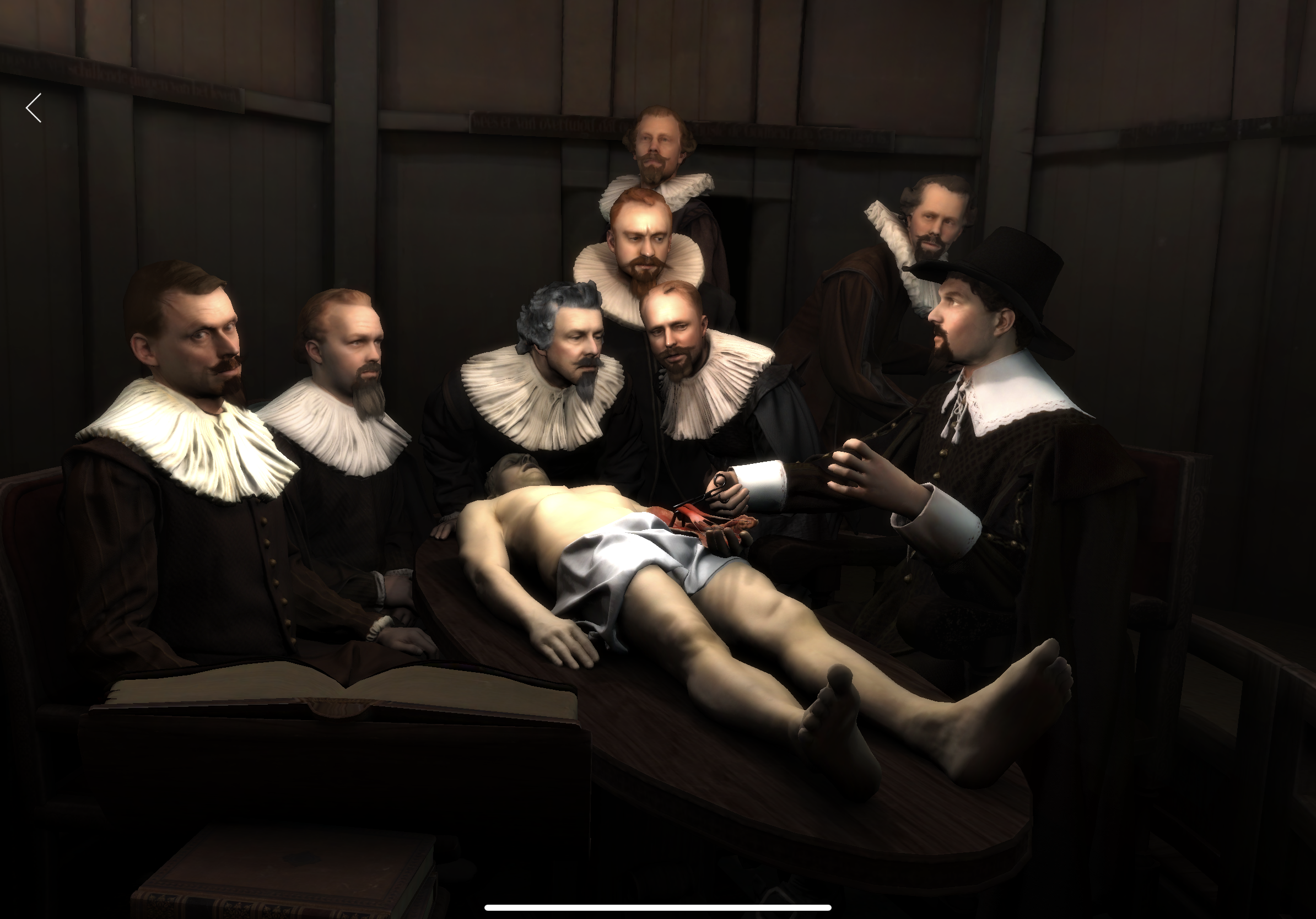
Observing the Anatomy Lesson from a different angle via the App
“We are proud to bring one of Rembrandt’s fascinating paintings to a broad and young audience in this innovative way. We have recently extended our partnership with the Mauritshuis for a further three years and this is exactly the kind of contemporary digital concept we would like to pursue. It fits well with our goal of helping to make art and culture accessible to everyone and making a positive contribution to society,” commented Dailah Nihot, member of the NN Group management board.
Projects of this kind, which are designed to both, improve the experience of art and museums, as well as increasing overall accessibility are set to increase. Tourism authorities have begun investigating such technology to enable potential visitors to decide exactly what they want to see prior to visiting.
Visit Scotland has introduced a downloadable VR App focusing on several very popular Scottish locations such as Edinburgh Castle. Using the App, visitors can explore the location and decide whether they actually want to see it in reality. While on a wider scale, tourism companies are considering whether such technology has the potential to reduce the tourist impact on sensitive locations – a VR trip may be the best way to sustainably experience a location like Antarctica.
This article is written by Angela Youngman, a long-established freelance travel/tourism/culture journalist and author based in Norfolk. She writes for a wide range of national & international publications and websites and is a member of the group creating the new Norwich Tapestry.
Similar content
26 Mar 2020
deadline
08 Oct 2020
19 Oct 2016 - 23 Oct 2016
from - to
11 Dec 2019 - 13 Dec 2019
from - to
04 Nov 2020 - 06 Nov 2020

